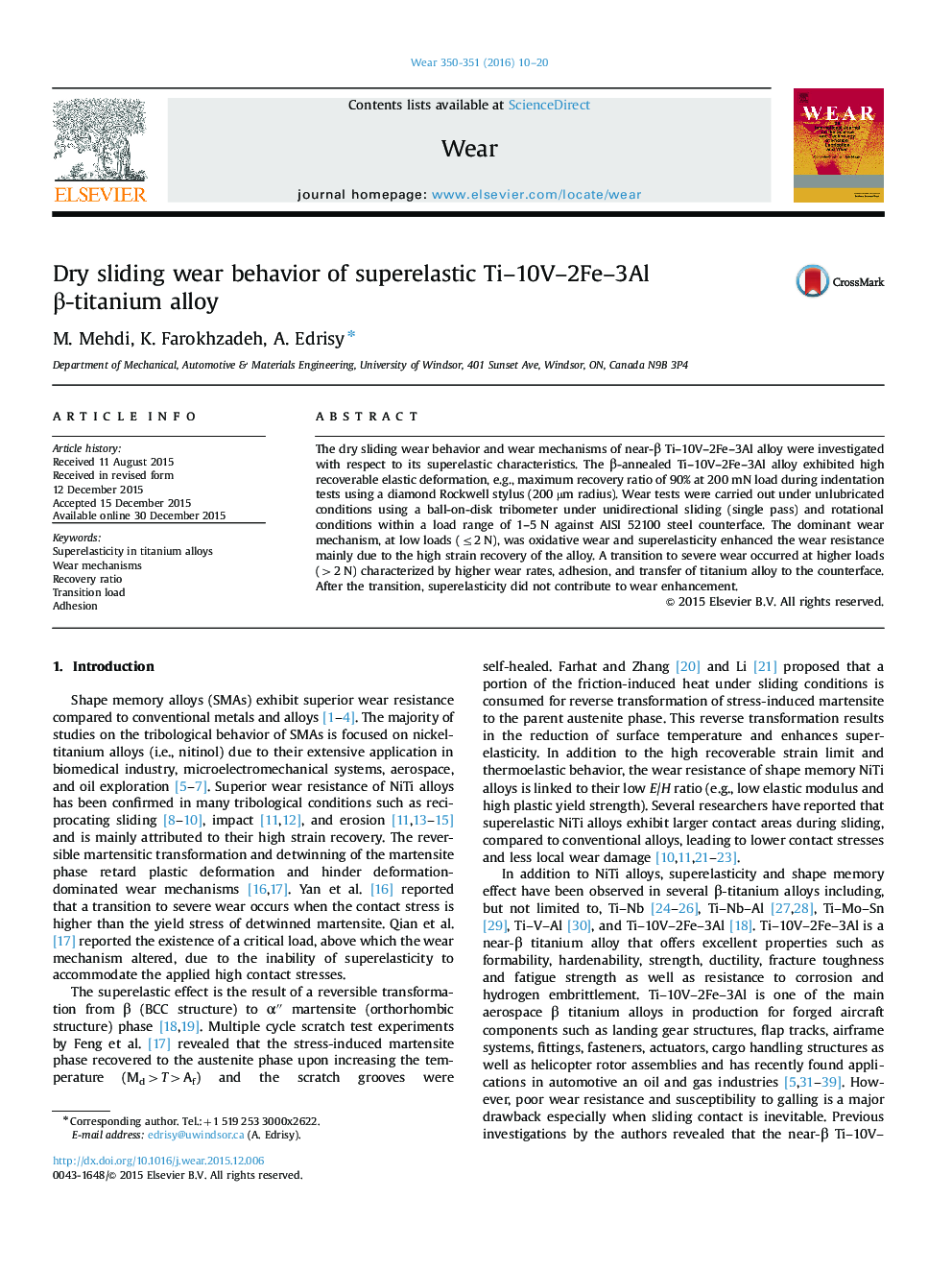| Article ID | Journal | Published Year | Pages | File Type |
|---|---|---|---|---|
| 616928 | Wear | 2016 | 11 Pages |
•Micromechanisms of mild and severe wear were established for Ti–10V–2Fe–3Al alloy.•Superelasticity was correlated with wear enhancement in the mild wear region.•Absence of superelasticity effect at high loads was linked to Ti adhesion tendency.
The dry sliding wear behavior and wear mechanisms of near-β Ti–10V–2Fe–3Al alloy were investigated with respect to its superelastic characteristics. The β-annealed Ti–10V–2Fe–3Al alloy exhibited high recoverable elastic deformation, e.g., maximum recovery ratio of 90% at 200 mN load during indentation tests using a diamond Rockwell stylus (200 µm radius). Wear tests were carried out under unlubricated conditions using a ball-on-disk tribometer under unidirectional sliding (single pass) and rotational conditions within a load range of 1–5 N against AISI 52100 steel counterface. The dominant wear mechanism, at low loads (≤2 N), was oxidative wear and superelasticity enhanced the wear resistance mainly due to the high strain recovery of the alloy. A transition to severe wear occurred at higher loads (>2 N) characterized by higher wear rates, adhesion, and transfer of titanium alloy to the counterface. After the transition, superelasticity did not contribute to wear enhancement.
